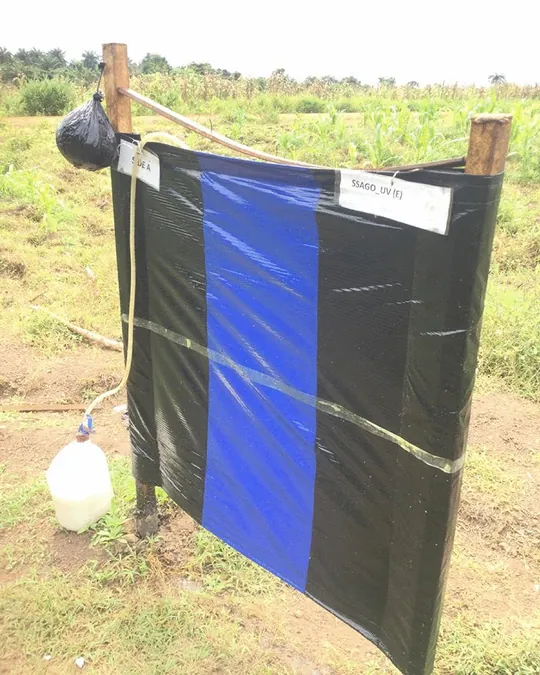
Innovative Advances in Onchocerciasis Surveillance: The Role of Odour-Baited Traps and Cutting-Edge DNA Detection Methods
2024-11-18
Author: Sarah
Introduction
Onchocerciasis, commonly known as river blindness, is a debilitating disease primarily affecting populations in Africa. Its elimination requires efficient surveillance methods to monitor the black fly vectors responsible for transmitting the Onchocerca volvulus parasite. Traditional techniques, such as human landing collections (HLC) and laboratory PCR assays, are being scrutinized for their efficiency and ethical considerations. This study explores the effectiveness of the Esperanza Window Trap (EWT) and innovative DNA detection methods in improving surveillance and monitoring efforts.
Research Objectives
The primary objectives of this study were to optimize the EWT for collecting black fly vectors by testing various carbon dioxide (CO2) mimics and to enhance detection methods for O. volvulus through a novel real-time quantitative PCR (qPCR) technique targeting mitochondrial DNA. The research was conducted across four ecological zones in Nigeria: Guinea savannah, derived savannah, rainforest, and montane forest.
Methodology
To evaluate the best attractants for black flies, EWTs were tested using different release rates of 2-butanone and cyclopentanone, two CO2 mimics. The traps were compared against those baited with naturally generated CO2. Sampling involved deploying traps in close proximity to known black fly breeding sites and assessing their effectiveness through field trials. Additionally, collected black flies were subjected to Ov ND5 qPCR and conventional O-150 PCR assays to determine the presence of O. volvulus.
Key Findings
1. EWT Performance: Traps baited with 2-butanone showed comparable results to those baited with CO2, effectively capturing significant numbers of black flies. However, cyclopentanone proved less effective, capturing far fewer flies across all tested locations.
2. Human Landing Collectors vs. EWTs: HLCs outperformed EWTs in terms of fly collection, raising concerns about the catch efficiency of the traps alone. Interestingly, the combined effort of two EWTs placed strategically garnered comparable results to those from one HLC.
3. Detection of Infected Pools: The Ov ND5 qPCR method demonstrated a higher detection rate of O. volvulus in black fly pools than the traditional O-150 PCR method, highlighting its potential for more sensitive surveillance.
4. Unexpected Positive Pools: Alarmingly, positive results for O. volvulus were found in areas previously deemed free of ongoing transmission. This raises serious questions regarding the reliability of past assessments and suggests a possible recrudescence of the disease, necessitating urgent follow-up investigations and program evaluations.
Conclusions
The study presents compelling evidence supporting the use of 2-butanone for xenomonitoring as a stable alternative to CO2 and emphasizes the superior performance of Ov ND5 qPCR over O-150 PCR in detecting O. volvulus. These findings underscore the need for continuous development of sensitive detection tools and alternative collection methods, striving towards the goal of eliminating onchocerciasis by 2030.
Implications for Public Health
The implications of these findings extend beyond academic interest; they carry weighty influence on public health policy aimed at combating onchocerciasis. The potential for undetected infections to undermine progress made in elimination efforts urges a reevaluation of current surveillance protocols, particularly in areas previously marked as free from the disease.
Call to Action
Public health officials in endemic regions must prioritize the adoption of these enhanced methodologies to bolster their surveillance capacity effectively. Comprehensive assessments should be carried out to manage onchocerciasis more effectively, ensuring communities remain protected from this debilitating disease while safeguarding the strides achieved in its elimination.
Stay tuned for further updates on the developments in the fight against onchocerciasis as innovative research continues to unfold!
 Brasil (PT)
Brasil (PT)
 Canada (EN)
Canada (EN)
 Chile (ES)
Chile (ES)
 Česko (CS)
Česko (CS)
 대한민국 (KO)
대한민국 (KO)
 España (ES)
España (ES)
 France (FR)
France (FR)
 Hong Kong (EN)
Hong Kong (EN)
 Italia (IT)
Italia (IT)
 日本 (JA)
日本 (JA)
 Magyarország (HU)
Magyarország (HU)
 Norge (NO)
Norge (NO)
 Polska (PL)
Polska (PL)
 Schweiz (DE)
Schweiz (DE)
 Singapore (EN)
Singapore (EN)
 Sverige (SV)
Sverige (SV)
 Suomi (FI)
Suomi (FI)
 Türkiye (TR)
Türkiye (TR)
 الإمارات العربية المتحدة (AR)
الإمارات العربية المتحدة (AR)